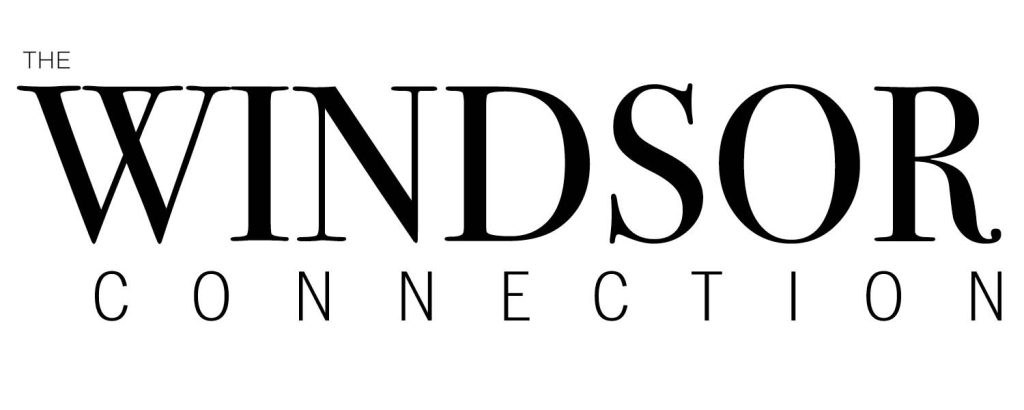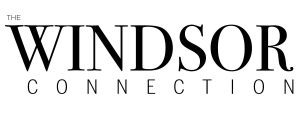 In today’s digital age, where online advertising dominates the marketing landscape, many marketers question the effectiveness of traditional print media, such as magazine advertising. While it may seem challenging to measure the impact of magazine ads in the digital age, there are several strategies that allow for tracking and measuring their effectiveness. In this article, we will explore innovative methods that enable marketers to gauge the success of their magazine advertising campaigns and make data-driven decisions.
In today’s digital age, where online advertising dominates the marketing landscape, many marketers question the effectiveness of traditional print media, such as magazine advertising. While it may seem challenging to measure the impact of magazine ads in the digital age, there are several strategies that allow for tracking and measuring their effectiveness. In this article, we will explore innovative methods that enable marketers to gauge the success of their magazine advertising campaigns and make data-driven decisions.
Understanding the Shift in Advertising Landscape
Before delving into the strategies for measuring the impact of magazine advertising, it’s essential to understand the evolving advertising landscape. With the rise of digital platforms, marketers now have access to a wealth of data and analytics that provide insights into the effectiveness of their advertising efforts. This data-driven approach has revolutionized the way marketers evaluate the success of their campaigns and allocate their budgets.
However, despite the digital revolution, magazine advertising still holds a significant place in the marketing mix. Magazines offer a unique opportunity to engage with a targeted audience, provide an immersive reading experience, and convey brand messages in a visually appealing manner. To ensure the continued relevance of magazine advertising, it’s crucial to measure its impact effectively.
Utilizing Promo Codes and Coupon Codes
One effective method for measuring the impact of magazine advertising is by using promo codes or coupon codes. By including a unique code in the magazine ad, marketers can track the number of customers who redeem the offer. This allows them to gauge the direct response generated by the ad and measure its effectiveness.
When customers use the promo code or coupon code while making a purchase, it provides valuable data on the conversion rate of the ad. Marketers can analyze the number of redemptions, calculate the return on investment (ROI), and assess the overall success of the magazine ad campaign. This method not only provides tangible results but also allows for a direct correlation between the ad and customer action.
Leveraging Vanity URLs and UTM Tracking Codes
Another effective way to measure the impact of magazine advertising is by using vanity URLs and UTM tracking codes. A vanity URL is a unique and memorable web address that leads customers to a specific landing page designed for the magazine ad campaign. By incorporating UTM tracking codes into the URL, marketers can track the sources of web traffic and gain insights into the effectiveness of the ad.
UTM (Urchin Tracking Module) codes are additional text appended to a URL that help identify the specific marketing campaign that drove the traffic. By customizing the UTM parameters, marketers can track the performance of individual magazine ads and compare them against other advertising channels. This method provides valuable data on the click-through rate, conversion rate, and overall engagement generated by the magazine ad.
Harnessing the Power of QR Codes
In the digital age, QR codes have become a popular tool for bridging the gap between offline and online marketing channels. By incorporating a QR code into a magazine ad, marketers can provide readers with an easy and convenient way to access additional information or offers. QR codes can be scanned using a smartphone, leading customers to a specific landing page or website.
To measure the impact of magazine advertising using QR codes, marketers can create unique URLs with UTM tracking codes for each ad. By analyzing the traffic and engagement generated by these URLs, they can determine the success of the magazine ad campaign. QR codes offer an interactive and trackable element to magazine ads, providing valuable insights into customer behavior and preferences.
Establishing a Unique Point of Contact
Incorporating a unique point of contact in magazine ads is another effective strategy for measuring their impact. By providing a dedicated phone number, email address, or website URL in the ad, marketers can track the inquiries and conversions generated by the campaign. This allows for direct attribution of customer actions to the magazine ad.
For example, by creating a specific email address or phone number for the magazine ad campaign, marketers can identify leads that originated from that particular source. This method provides valuable data on customer engagement, allowing marketers to measure the effectiveness of their magazine ads in generating interest and driving conversions.
Implementing Surveys and Feedback Forms
One straightforward yet effective way to measure the impact of magazine advertising is by directly asking customers about their source of discovery. By including a survey question or feedback form on a website or checkout page, marketers can gather valuable insights into how customers found their brand or product.
For instance, after making a purchase, customers can be prompted to fill out a short questionnaire asking about their awareness of the brand or product through specific channels, including magazine ads. By incentivizing customers to participate, such as offering a discount or free gift, marketers can increase the response rate and gather more accurate data.
Combining Print and Digital Advertising Efforts
In the digital age, it’s crucial to recognize the power of integrating print and digital advertising efforts. While print ads may not provide the same level of trackability as digital ads, they can still play a valuable role in driving brand awareness and engagement. By combining print and digital channels, marketers can create a cohesive and holistic advertising strategy.
Studies have shown that combining print advertising with email marketing can significantly increase sales. By leveraging the strengths of both mediums, marketers can reach a wider audience and reinforce brand messages. While it may be challenging to directly measure the impact of print ads in such cases, the overall success of the integrated campaign can be assessed through comprehensive analytics and attribution modeling.
Personalizing Print Advertisements for Greater Impact
Personalization has become a buzzword in the marketing industry, and for a good reason. By tailoring print advertisements to individual recipients, marketers can significantly increase their response rates. Variable Data Printing (VDP) technology allows for the customization of printed ads with different names, images, addresses, and more, without interrupting the printing process.
Personalized print ads create a sense of relevance and connection with the audience, making them more likely to respond positively. By measuring the response rates and conversion rates of personalized print ads, marketers can gain insights into the effectiveness of their targeting and creative strategies. This data can then be used to optimize future print advertising campaigns.
Conducting A/B Testing for Optimal Results
A/B testing, also known as split testing, is a valuable technique for measuring the impact of different elements in a magazine ad. By creating multiple versions of an ad and randomly distributing them among the target audience, marketers can compare the performance of each variation. This allows them to identify the most effective elements and refine their future advertising efforts.
A/B testing can be applied to various aspects of a magazine ad, including the layout, headline, imagery, call-to-action, and offer. For example, marketers can test the effectiveness of including a QR code versus a promo code in the ad. By analyzing the response rates and conversion rates of each variation, marketers can make data-driven decisions and optimize their magazine advertising campaigns.
Analyzing Web Analytics and Conversion Tracking
Web analytics and conversion tracking are essential tools for measuring the impact of magazine advertising in the digital age. By leveraging platforms like Google Analytics, marketers can gain insights into website traffic, user behavior, and conversion rates originating from magazine ads. This data provides valuable information on the effectiveness of the ad campaign and helps refine future strategies.
Through web analytics, marketers can track key metrics such as the number of visits, time spent on site, bounce rate, and conversion rate. By setting up conversion tracking goals, they can measure the specific actions taken by users, such as form submissions, purchases, or downloads. This data allows marketers to attribute conversions to specific magazine ads and assess their impact accurately.
The Importance of Multi-Touch Attribution
When measuring the impact of magazine advertising in the digital age, it’s crucial to consider the concept of multi-touch attribution. Multi-touch attribution refers to the practice of assigning value to each touchpoint or interaction a customer has with a brand before making a purchase. This approach recognizes that magazine ads may contribute to the customer journey, even if they are not the final conversion point.
By implementing multi-touch attribution models, marketers can gain a comprehensive understanding of how magazine ads influence customer behavior and contribute to conversions. This holistic view allows for a more accurate assessment of the impact of magazine advertising and facilitates informed decision-making in allocating marketing budgets.
Embracing Technology for Enhanced Measurement
As technology continues to advance, new tools and techniques for measuring the impact of magazine advertising in the digital age are emerging. Marketers can leverage advanced technologies such as augmented reality (AR) and near-field communication (NFC) to enhance the trackability and interactivity of magazine ads.
By incorporating AR elements into print ads, marketers can create immersive experiences and track user engagement. For example, readers can scan a QR code in a magazine ad, which triggers an AR experience that provides additional product information or interactive content. The data collected from these interactions can provide valuable insights into the effectiveness of the magazine ad campaign.
Similarly, NFC technology allows readers to interact with magazine ads by simply tapping their smartphones on designated spots. This enables marketers to track user engagement and capture valuable data on customer behavior. By embracing these technological advancements, marketers can enhance the measurement capabilities of magazine advertising and gain deeper insights into its impact.
While measuring the impact of magazine advertising in the digital age may present some challenges, it is by no means impossible. By leveraging strategies such as promo codes, vanity URLs, QR codes, unique points of contact, surveys, and personalized ads, marketers can effectively track and measure the success of their magazine ad campaigns. Additionally, by combining print and digital advertising efforts, conducting A/B testing, analyzing web analytics, and embracing technology, marketers can gain valuable insights to optimize their magazine advertising strategies. In this ever-evolving marketing landscape, the ability to measure and optimize the impact of magazine advertising is essential for driving success and achieving tangible results.
Contact Us (415-261-4075) To Learn Ways to Advertise Your Business!
—
 About Advertising in The Windsor Connection
About Advertising in The Windsor Connection
We are the best way to reach a hyper-local set of potential Windsor customers. A study was conducted showing that businesses prefer community magazines far more than any other form of media, with 30% of those surveyed ranking community magazines as #1 (second place was 15% and the average of all other forms was 5.8%). The Windsor Connection features local Windsor families, businesses, news, events, sports, and much more right here in our area. Windsor residents love us because we proudly connect them with local small businesses. Local small businesses love us because we provide them a highly effective advertising platform.
> Learn More

 About Advertising in The Windsor Connection
About Advertising in The Windsor Connection